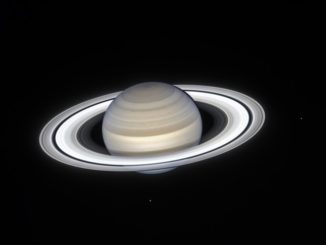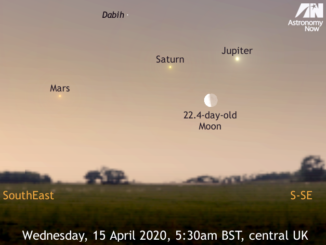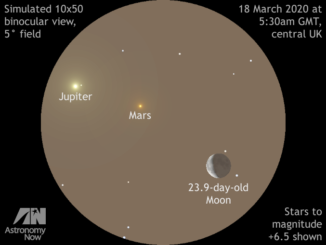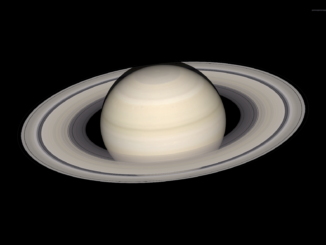
Saturn





See the waning crescent Moon meet the dawn planets, 15–16 April 2020
There’s a lot of planetary activity in the dawn sky in mid-April. If you’re an early riser in the British Isles, let the waning crescent Moon be your guide to the naked-eye planets Jupiter, Saturn and Mars on 15 and 16 April 2020. Typical 7×50 or 10×50 binoculars will show these attractive conjunctions well, while the smallest of telescopes also reveal some of Jupiter’s bright Galilean moons.

See the old Moon join a dawn planetary parade, 18–19 March
If you’re an early riser in the British Isles, let the waning crescent Moon be your guide to three naked-eye planets – Mars, Jupiter and Saturn – at dawn on 18 and 19 March 2020. This celestial conjunction occurs in the constellation of Sagittarius where you can see all four Solar System bodies within the span of a fist at arm’s length. Look for attractive binocular conjunctions too.


See the young Moon meet the gas giants at dusk, 3–5 October
Skywatchers in Western Europe and the UK should look low to the south-southwest at nautical dusk on 3 and 5 October 2019 to view the waxing Moon pass close to Jupiter and Saturn, the Solar System’s largest gas giant planets. Observers at northern temperate latitudes should make the most of any opportunities to view these planets before they are lost in twilight.

See the International Space Station above the eclipsed Moon on 16 July
The serene beauty of the International Space Station gliding silently across the sky needs nothing more than the naked eye to appreciate. But when the dazzling ISS is also in conjunction with a partially eclipsed Moon, Saturn and Jupiter on the 50th anniversary of Apollo 11’s launch, be sure to look low in the southeast through south around 10:06pm BST on 16 July 2019!

See ringed planet Saturn at its best in July 2019
Observers in Western Europe with a clear sky around local midnight cannot fail to notice the conspicuous ‘star’ that is Jupiter low in the south. But look a span-and-a-half of an outstretched hand at arm’s length to Jupiter’s left and you’ll find another giant of the solar system – Saturn. The ringed planet is closest to Earth for 2019 on 9 July, so here is our quick observing guide.
